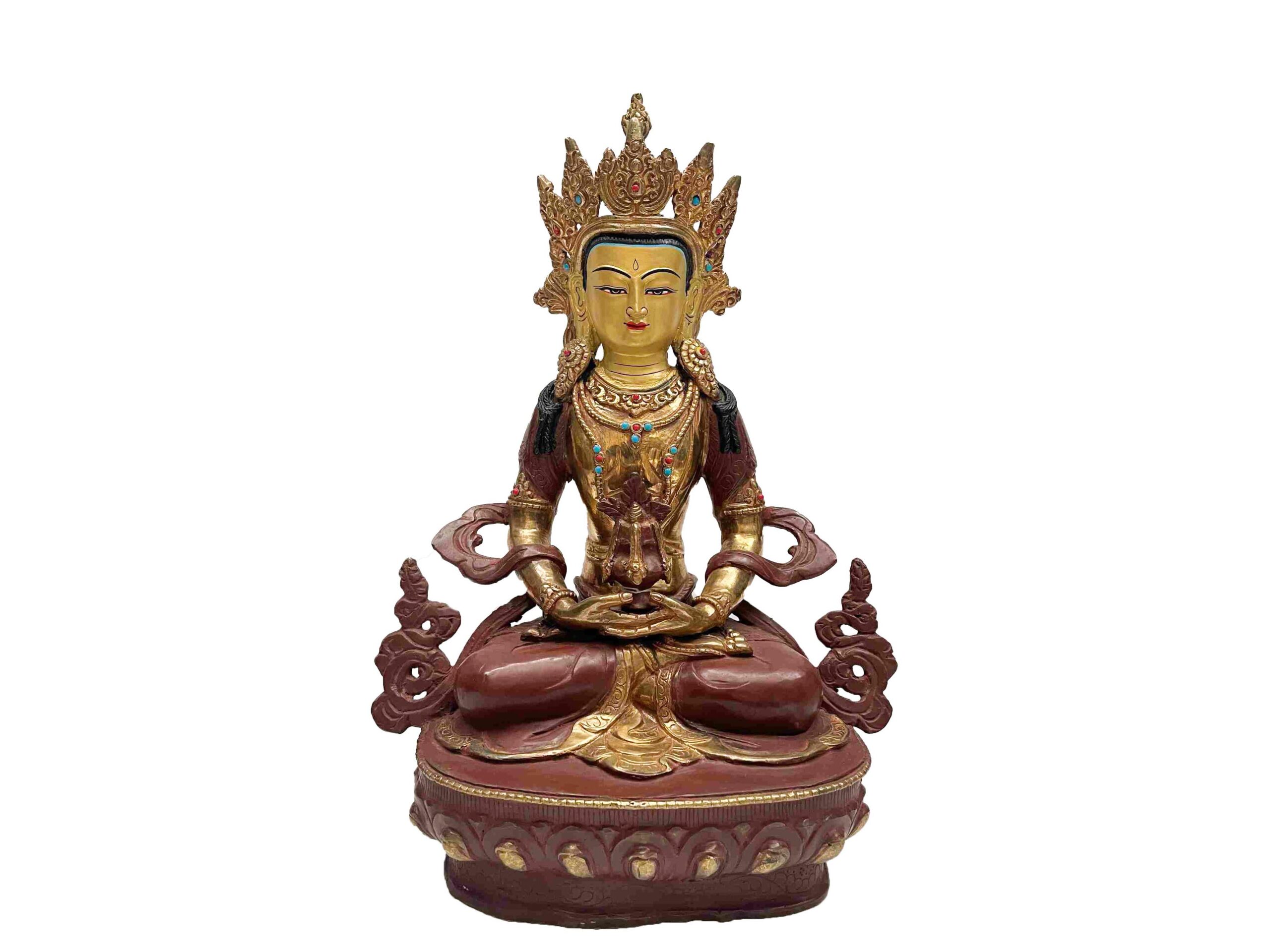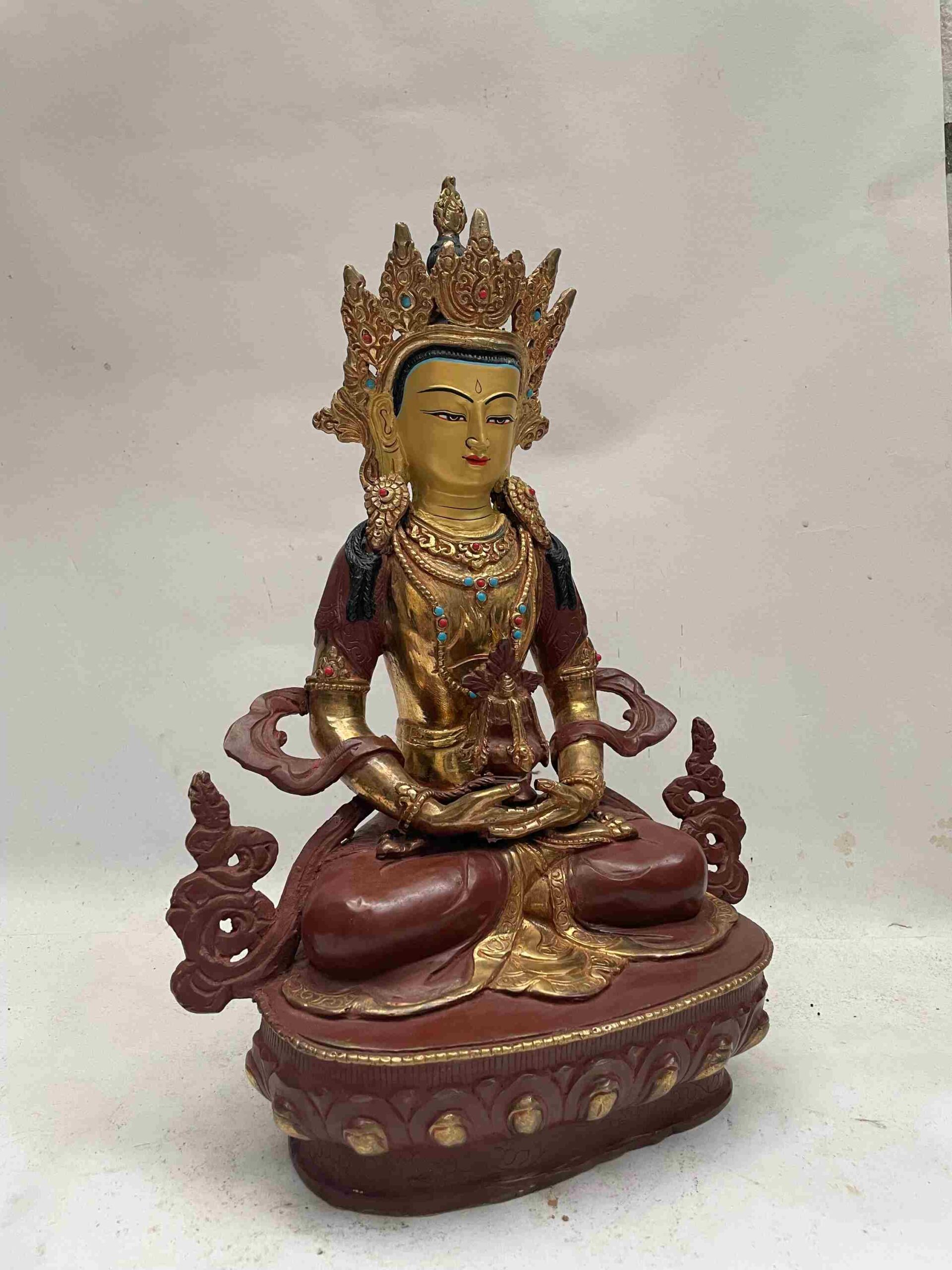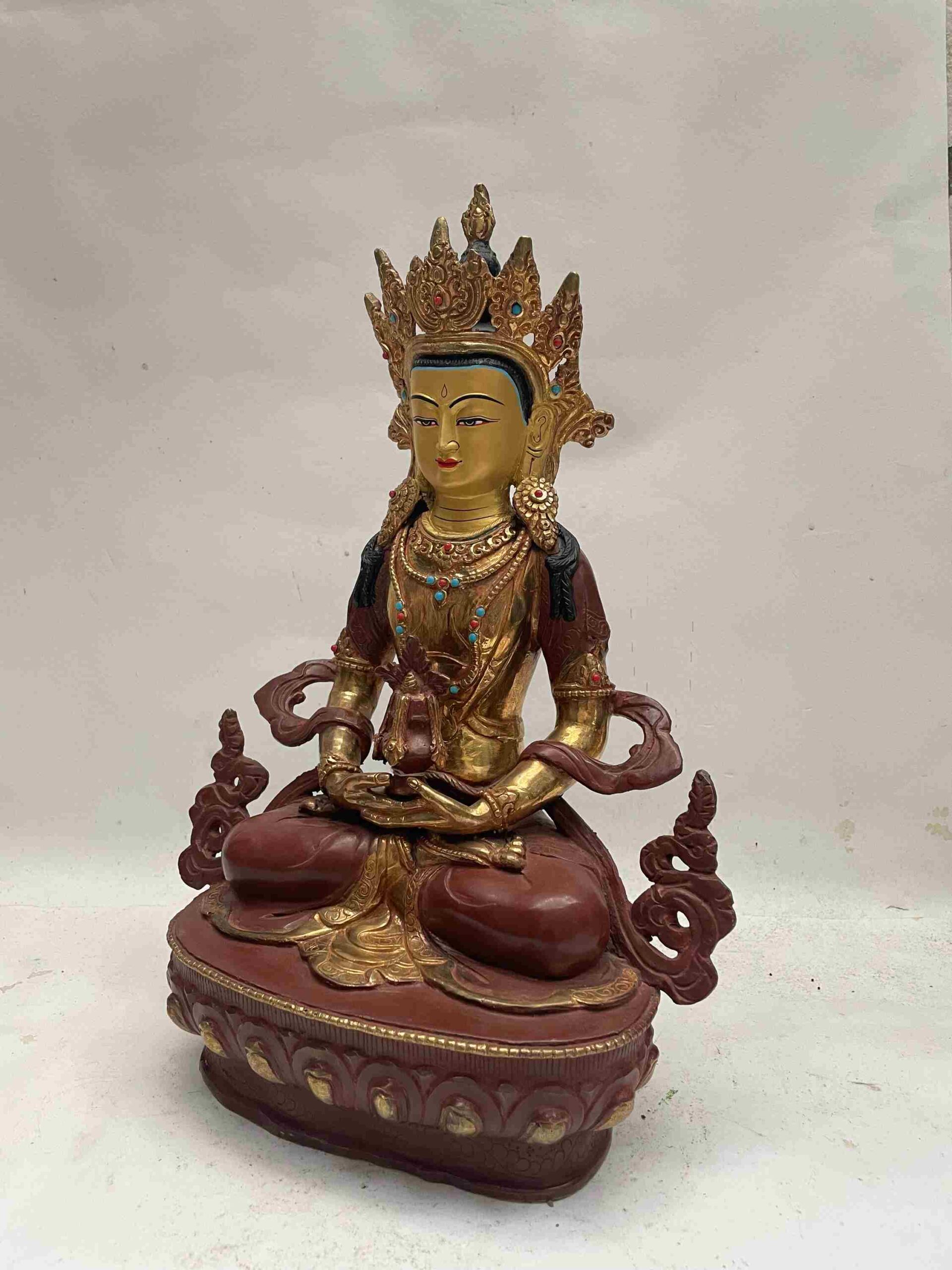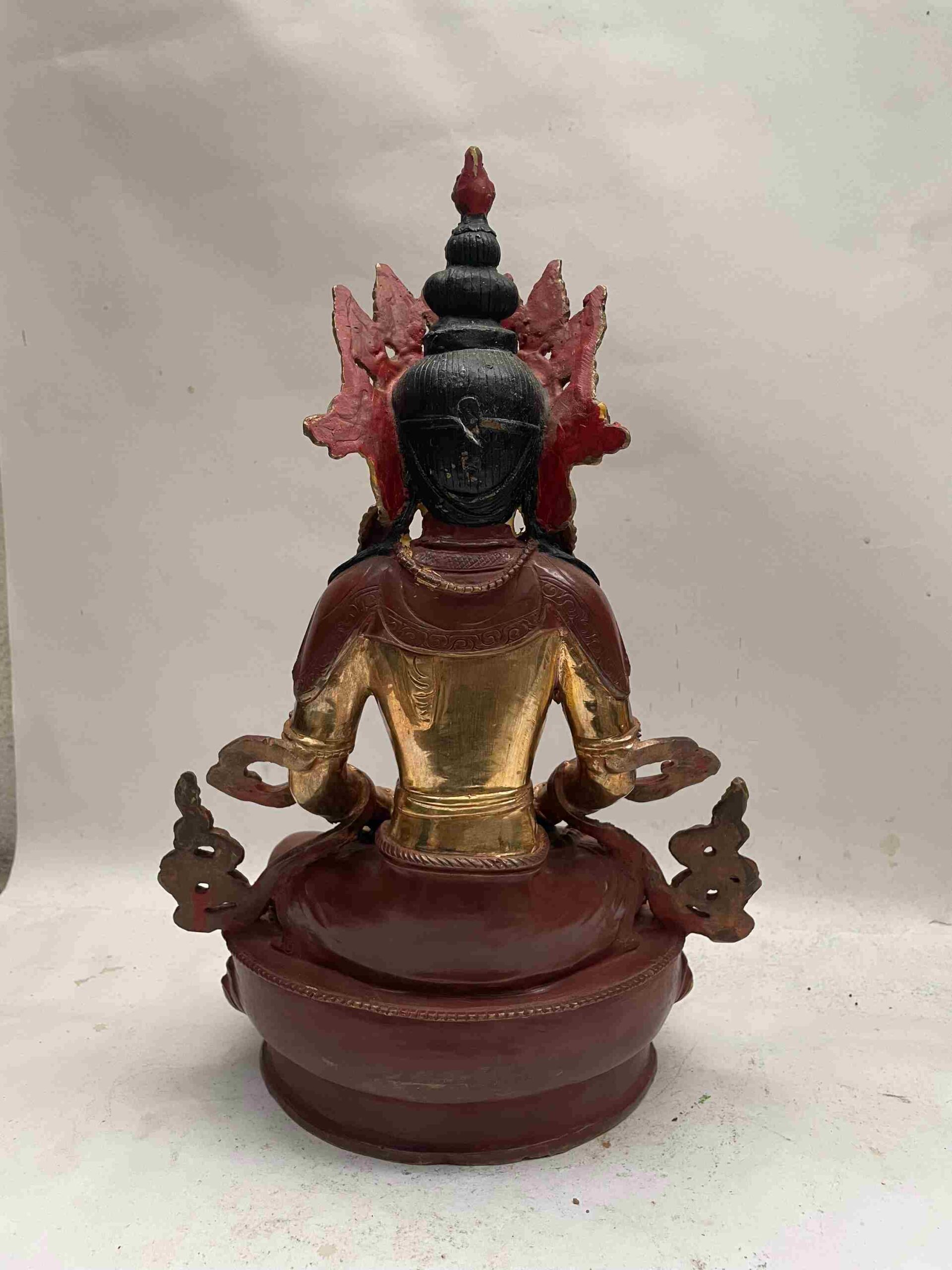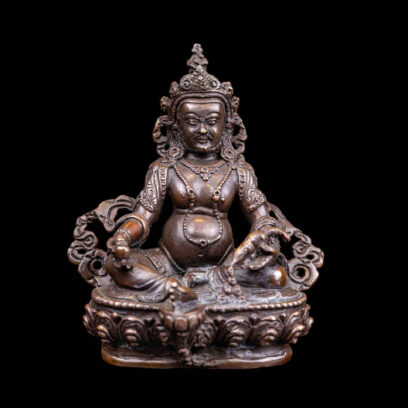Buddhist Handmade Statue of Aparimita – Partly Gold Plated, Face Painted (Amitayus, Chepame)
-
Item Code: HME26120
-
Weight: 3562 grams
-
Dimensions (cm): 35 x 19 x 13
-
Material: Copper
-
Finish: Partly Fire-Gold Plated, Face Painted
-
Availability: Available
Aparimita: The Buddha of Limitless Life
Aparimita, also known as Amitayus or Chepame, is a revered figure in Mahayana Buddhism and is widely worshipped as a deity who bestows longevity, health, and spiritual vitality. Characterized by his deep red hue, Aparimita is depicted with both hands in the dhyana mudra, holding a kalasha (ambrosia vase), which symbolizes the elixir of immortality.
He is adorned with elaborate ornaments, a hallmark of a Sambhogakaya Buddha, and is depicted in full regalia—crowned and radiant, with distinguishing features such as the Ushnisha (crown of enlightenment) and Urnakosha (tuft of hair between the eyebrows). Unlike some other deities, Aparimita is never portrayed with a consort, underscoring his solitary meditative purity and profound spiritual focus.
Gold-Painted Face
The face of the statue is carefully hand-painted with gold to accentuate its most expressive elements—especially the eyes and lips. This nuanced detail is not merely decorative; it is a sacred ritual in Buddhist statue-making, symbolizing the awakening of the statue’s spiritual presence. Painting the face in gold enhances both its aesthetic and spiritual appeal, imbuing it with a lifelike quality and preparing it for veneration and consecration.
Partly Gold-Plated Finish
This statue features a partially gold-plated body, applied using a traditional fire-gilding method practiced by skilled Nepali artisans. In this technique, specific areas of the statue are masked to protect them from plating, while the exposed parts are gilded using intense heat and pressure. This controlled application results in a harmonious contrast between the gleaming gold body and the oxidized or painted attire, symbolizing the juxtaposition of divine perfection and monastic humility. The technique not only enhances the statue’s visual appeal but also deepens its spiritual significance.
Lost-Wax Casting Technique
Crafted using the time-honored lost-wax casting method, this statue is a product of intricate craftsmanship. The process begins with a wax model, which is coated in ceramic layers to form a mold. Once the mold cures, the wax is melted out and molten metal is poured into the cavity. After the metal cools and hardens, the ceramic mold is broken away to reveal a highly detailed, one-of-a-kind sculpture. This ancient process ensures precision, individuality, and lasting beauty in every piece.
